

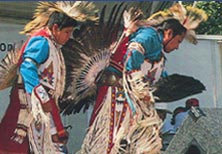
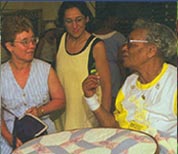
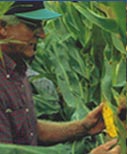
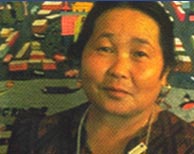
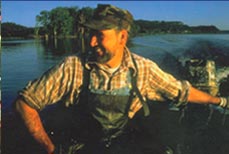
| Resources | ||||||
|
||||||
| Learning Guide |
| 1. Social Studies |
| 2. Language Arts |
| 3. Music |
| 4. Art |
| 5. Special: Multi-Disciplinary, Culminating Activities |
|
The technique of quilting fabric is used for functional and aesthetic reasons: to keep people warm and to make bed covers, jackets, and other items of clothing look pretty. Most American quilts are “pieced.” The fabric is first cut into shapes using a template or pattern and then sewn or “pieced” together to make geometrical designs or “patterns,” which have a variety of traditional names. Families, quilting guilds, magazines, and other publications are the sources for patterns. The finished top, whether pieced or “whole cloth,” is basted to a filler, usually of polyester batting today, and a liner; marked with the “quilting” or stitching pattern; stretched and basted onto a quilting frame; and then quilted in sections. Quilts are also held together by a method called “tying,” “tacking,” or “knotting,” which involves sewing the “sandwich” together with regularly placed knots of yarn or thread instead of a running stitch.
Folklife Background Quilts come in many varieties in Iowa. Most Anglo-American quilters make pieced or appliquéd covers in symmetrical patterns held together with very small, regular stitches. Amana quilters use “whole cloth” or one large woven piece that showcases the tiny quilting stitches that trace floral and geometrical designs. Amish and Mennonite quilters are known for their deep contrasting color combinations; and many African-American quilters employ a strip or “string” (instead of patch or square) construction, medium-sized stitches, asymmetrical designs, bold, contrasting colors, and knot, tack, or tie the quilt layers together. |
Previous |
| | Next |
| Objectives | ||||||
Students will be able to:
|
| Cross References |
Instructional Program: Quilting: A Pioneer Craft |
| smithsonian institution |
 |
pioneer hi-bred international, inc. |
iowa sesquicentennial commission |
 |
iowa arts council |
